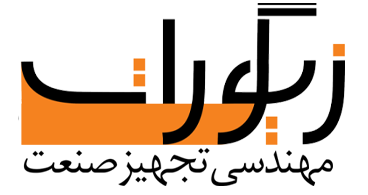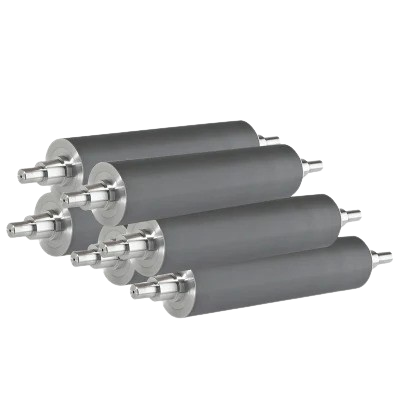Introduction and Application of Drum Roller
One of the most important parts of conveyors is drum rollers, which enable the belt to rotate. The roller is a key component of a conveyor belt, and its optimal performance and long service life are important factors to consider. Therefore, the design of the roller is very important. In this article, we will introduce the complete drum, pulley, or roller, its various types, and its applications in conveyor systems.
Drum Roller
A drum roller, also known as a conveyor belt drum, conveyor belt pulley, or conveyor belt roller, is a key component of a conveyor belt. These rollers are located at the beginning and end of the conveyor belt, and the conveyor belt is actually wrapped around them, which allows the belt to rotate.
Applications of Drum Roller
The drum roller is a type of conveyor belt roller that is widely used in various industries. These rollers are made of steel or cast iron and have high resistance to wear and tear. This structure is capable of carrying heavy loads and has a long service life. Therefore, they are used in various industries, some of which are mentioned below:
- Steel industry: This equipment is used in the steel industry to transport raw materials, semi-finished products, and finished products such as sheets, bars, and pipes.
- Cement, gypsum, and lime: Other applications include the cement, gypsum, and lime industries for transporting limestone, clay, additives, and bulk cement.
- Metal and non-metal mineral mines: The mentioned structure is used in metal and non-metal mineral mines to transport ore, minerals, and waste.
- Coal, sand, and gravel mines: This structure is used in coal, sand, and gravel mines to transport coal, sand, and gravel.
- Paper and chemical industries: In activities such as paper and chemicals, drum rollers are used to transport paper pulp, chemicals, and finished products such as paper and cardboard.
- Food industry: This type of drum can be useful in food activities for transporting raw materials, semi-finished products, and finished products such as dairy products, cereals, and fruits and vegetables.
- Agricultural industry: Other applications include the agricultural industry for transporting agricultural products such as wheat, corn, soybeans, and fruits and vegetables.
Where are Drum Rollers Placed?
Choosing the right location for the drum roller is very important. If the structure is not placed in the right location, it may cause the conveyor belt to slip, deflect, or tear. The first places to consider for this equipment are the beginning and end of the conveyor belt. The initial section transfers the driving force to the conveyor belt and sets it in motion (forward). The end section collects the conveyor belt and stretches it.
Other locations include:
- Conveyor belt changeover points: They help guide the conveyor belt and prevent it from deflecting at conveyor belt changeover points.
- Conveyor belt slopes: They help prevent conveyor belt slippage on conveyor belt slopes. It may be necessary to use more rollers to prevent conveyor belt slippage.
The exact location of this equipment depends on various factors. The type of conveyor belt is one of these factors. Fixed conveyor belts usually have two rollers, one at the beginning of the conveyor belt and the other at the end. However, mobile conveyor belts may have several rollers located along the conveyor belt. The type of material being conveyed also affects the placement of this equipment. If the material being conveyed is heavy or slippery, it may be necessary to use more conveyor belts.
Features and Specifications of a Drum Roller
Drum rollers are made of various materials such as steel, cast iron, aluminum, and plastic. The material of the roller should be selected based on the type of material being conveyed, the working environment of the conveyor belt, and the load capacity of the conveyor belt. The diameter of this structure depends on the speed of the conveyor belt and its load capacity. The larger the diameter, the more suitable they are for high-speed and high-load conveyor belts.
Other specifications of this equipment include:
- Width: The width of this equipment depends on the width of the conveyor belt.
- Drum coating: The drum coating is the third characteristic that exists in most of these items. This additional layer increases the efficiency and service life of the machine. The coating used in this area can be of various types, including plastic, rubber, epoxy, and galvanized.
- Bearings: The conveyor belt roller has bearings that help the roller rotate smoothly. The bearings should be lubricated regularly to increase their service life. These components also have a housing that protects the bearings and other components of the roller.
Overall, a drum should have some characteristics.
- Resistance to wear and tear: This is one of the most important factors. The roller must be resistant to wear from the conveyed material. This structure should not corrode easily.

